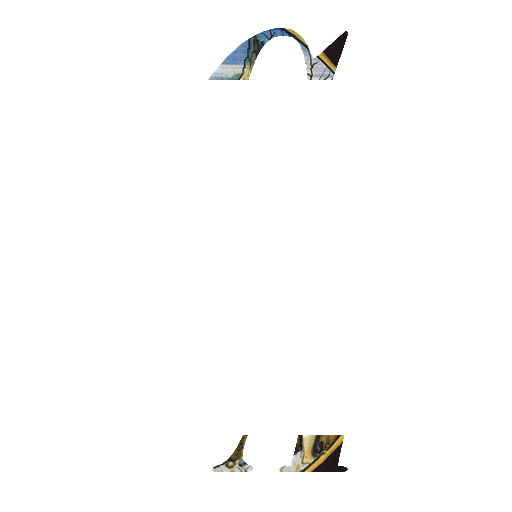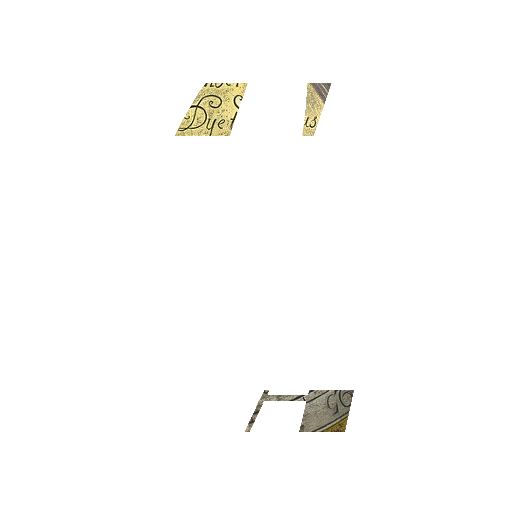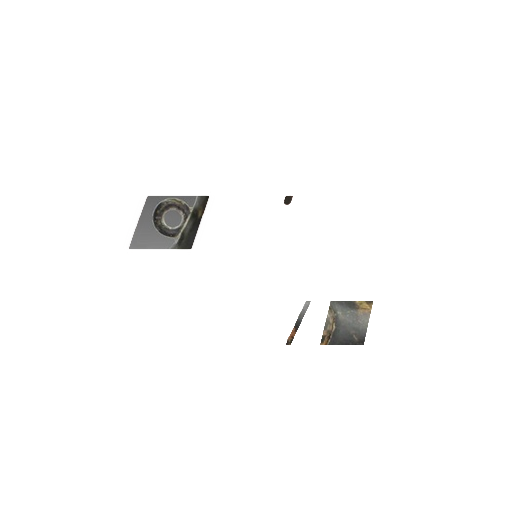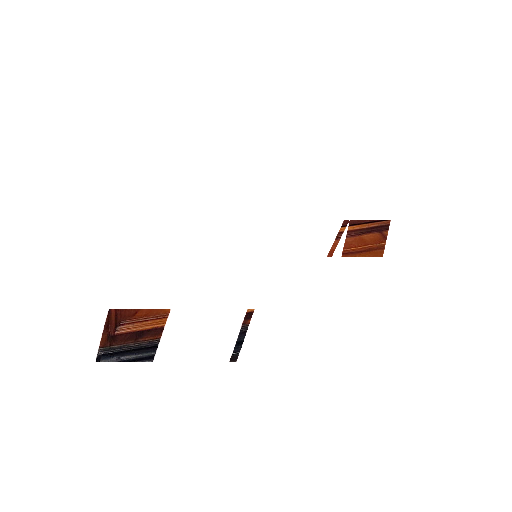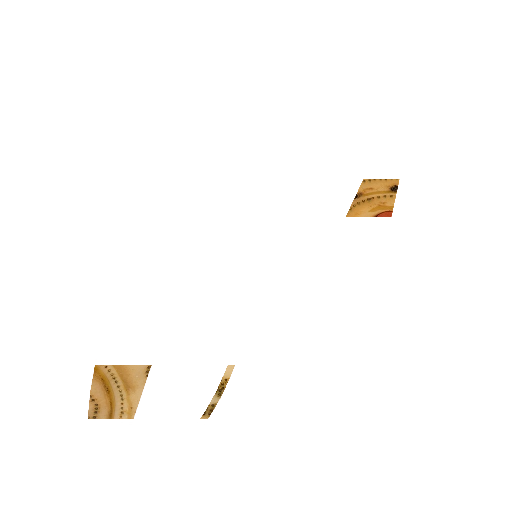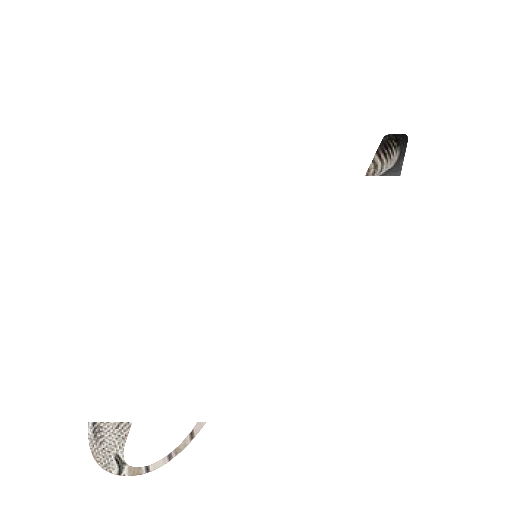Porcelain derives its present name from the old Italian porcellana (cowrie shell) because of its resemblance to the translucent surface of the shell. Porcelain can informally be referred to as china or fine china in some English-speaking countries, as China was the birthplace of porcelain making. Properties associated with porcelain include low permeability and elasticity; considerable strength, hardness, toughness, whiteness, translucency and resonance; and a high resistance to chemical attack and thermal shock.
Porcelain has been described as being "completely vitrified, hard, impermeable (even before glazing), white or artificially coloured, translucent (except when of considerable thickness), and resonant." However, the term porcelain lacks a universal definition and has "been applied in a very unsystematic fashion to substances of diverse kinds which have only certain surface-qualities in common".
Chinese porcelain
Porcelain originated in China. Although proto-porcelain wares exist dating from the Shang Dynasty (1600–1046 BC), by the time of the Eastern Han Dynasty period (206 BC – 220 AD), glazed ceramic wares had developed into porcelain. Porcelain manufactured during the Tang Dynasty (618–907 AD) was exported to the Islamic world, where it was highly prized. Early porcelain of this type includes the tri-colour glazed porcelain, or sancai wares. There is no precise date to separate the production of proto-porcelain from that of porcelain. Porcelain items in the sense that we know them today could be found in the Tang Dynasty, and archaeological finds have pushed the dates back to as early as the Han Dynasty (206 BC – 220 AD). By the Sui Dynasty (581–618 AD) and Tang Dynasty (618–907 AD), porcelain was widely produced.
Eventually, porcelain and the expertise required to create it began to spread into other areas of East Asia. During the Song Dynasty (960–1279 AD), artistry and production had reached new heights. The manufacture of porcelain became highly organised, and the kiln sites excavated from this period could fire as many as 25,000 wares. While Xing Ware is regarded as among the greatest of the Tang Dynasty porcelain, Ding Ware became the premier porcelain of Song Dynasty. By the time of the Ming Dynasty (1368–1644 AD), porcelain wares were being exported to Europe. Some of the most well-known Chinese porcelain art styles arrived in Europe during this era, such as the coveted blue-and-white wares. The Ming Dynasty controlled much of the porcelain trade, which was expanded to Asia, Africa and Europe via the Silk Road. In 1517, Portuguese merchants began direct trade by sea with the Ming Dynasty, and in 1598, Dutch merchants followed.
Some porcelains were more highly valued than others in imperial China. We can identify the most valued types by their association with the court, either as tribute offerings, or as products of kilns under imperial supervision. Some of the best-known examples are of Jingdezhen porcelain. During the Ming dynasty, Jingdezhen porcelain become a source of imperial pride. The Yongle emperor erected a white porcelain brick-faced pagoda at Nanjing, and an exceptionally smoothly glazed type of white porcelain is peculiar to his reign. Jingdezhen porcelain's fame came to a peak in the Qing dynasty.
European porcelain
These exported Chinese porcelains were held in such great esteem in Europe that in the English language china became a commonly–used synonym for the Franco-Italian term porcelain. Apart from copying Chinese porcelain in faience (tin glazed earthenware), the soft-paste Medici porcelain in 16th-century Florence was the first real European attempt to reproduce it, with little success.
Early in the 16th century, Portuguese traders returned home with samples of kaolin, which they discovered in China to be essential in the production of porcelain wares. However, the Chinese techniques and composition used to manufacture porcelain were not yet fully understood. Countless experiments to produce porcelain had unpredictable results and met with failure. In the German state of Saxony, the search concluded in 1708 when Ehrenfried Walther von Tschirnhaus produced a hard, white, translucent type of porcelain specimen with a combination of ingredients, including kaolin and alabaster, mined from a Saxon mine in Colditz. It was a closely guarded trade secret of the Saxon enterprise.
In 1712, many of the elaborate Chinese porcelain manufacturing secrets were revealed throughout Europe by the French Jesuit father Francois Xavier d'Entrecolles and soon published in the Lettres édifiantes et curieuses de Chine par des missionnaires jésuites. The secrets, which d'Entrecolles read about and witnessed in China, were now known and began seeing use in Europe.
Important European porcelain manufacturing companies;
Medici porcelain in Italy, esteblished in 1575
Rouen porcelain in France, esteblished in 1673
Saint-Cloud porcelain in France, esteblished in 1693
Meissen porcelain in France, esteblished in 1710
Vienna porcelain in Austria, esteblished in 1718
Venice porcelain in Italy, esteblished in 1720
Chantilly porcelain in France, esteblished in 1730
Doccia porcelain in Italy, esteblished in 1735
Vincennes porcelain in France, esteblished in 1740
Capodimonte porcelain in Italy, esteblished in 1743
Chelsea porcelain in England, esteblished in 1743
Imperial porcelain factory in Russia, esteblished in 1744
Mennecy porcelain in France, esteblished in 1745
Höchster porzellanmanufaktur in Germany, esteblished in 1746
Bow porcelain factory in England, esteblished in 1747
Fürstenberg china in Germany, esteblished in 1747
Nymphenburg Porcelain Manufactory in Germany, esteblished in 1747
Plymouth porcelain in England, esteblished in 1748
Royal Crown Derby in England, esteblished in 1750
Tournai porcelain in Belgium, esteblished in 1751
Royal Worcester in England, esteblished in 1751
Liverpool porcelain in England, esteblished in 1754
Frankenthal Porcelain Factory in Germnay, esteblished in 1755
Manufacture nationale de Sèvres in France, esteblished in 1756
Porzellanmanufaktur Gotha in Germany, esteblished in 1757
Royal Crown Derby in England, esteblished in 1757
Lowestoft Porcelain Factory in England, esteblished in 1757
Marieberg porcelain in Sweden, esteblished in 1758
Ludwigsburg Porcelain in Germany, esteblished in 1758
Ansbach Porcelain in Germany, esteblished in 1758
Wedgwood in England, esteblished in 1759
Weesp porselein in Netherlands, esteblished in 1759
Real Fábrica del Buen Retiro in Spain, esteblished in 1760
Kloster Veilsdorf porcelain in Germany, esteblished in 1760
Porzellanmanufaktur Kelsterbach in Germany, esteblished in 1761
Volkstedt porcelain in Germany, esteblished in 1762
Nove Porcelain in Italy, esteblished in 1762
Royal Porcelain Manufacture in Germany, esteblished in 1763
Wallendorf Porcelain in Germany, esteblished in 1764
Gardner Manufacture in Russia, esteblished in 1766
Villeroy & Boch in Germany, esteblished in 1766
Spode in England, esteblished in 1767
Chelsea porcelain factory in England, esteblished in 1769
Rörstrand in Sweden, esteblished in 1770
Limoges porcelain in France, esteblished in 1771
Loosdrechts porselein in Netherlands, esteblished in 1774
Aynsley China in England, esteblished in 1775
Royal Copenhagen in Denmark, esteblished in 1775
Graf von Henneberg Porcelain in Germany, esteblished in 1777
Rauenstein porcelain in Germany, esteblished in 1783
Weimar Porcelain in Germany, esteblished in 1790
Haas & Czjzek in Czech Republic, esteblished in 1792
Mintons in England, esteblished in 1793
Thun 1794 in England, esteblished in 1794
Königlich privilegierte in Germany, esteblished in 1794
Porcelain articles are often seen in local auctions especially 19ᵗʰ century pieces with fine examples, such as Meissen, Chelsea, Mintons and Limoges, boosting a rather vast competing crowd and fetch good prices.
Porcelain articles are always present in Fine Furnishings and Decorated Arts auctions at Centurion Auctioneers which are held regularly.
Click on the images for more information.
Should you have any questions in regards to Porcelain articles that you might wish to evaluate or to list in future auctions, please visit the CONTACT page , the VALUATIONS page or the REQUEST INFORMATION page or send an email to Centurion Auctioneers - info@centurion-auctions.com
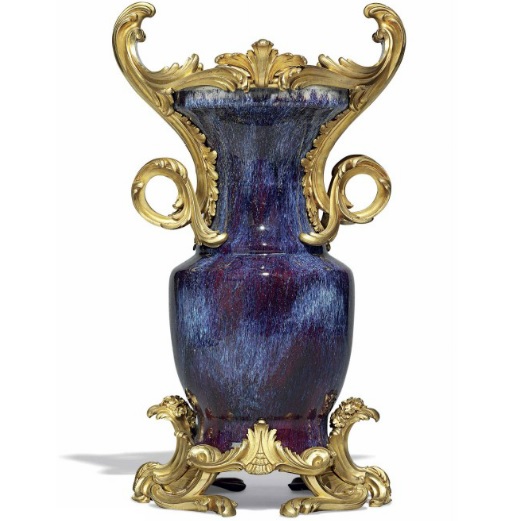
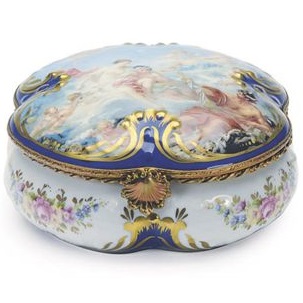
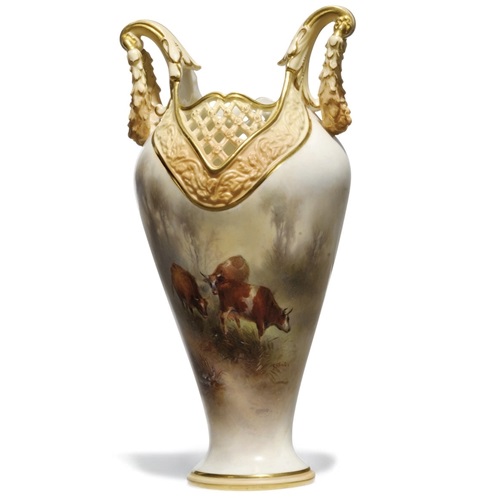
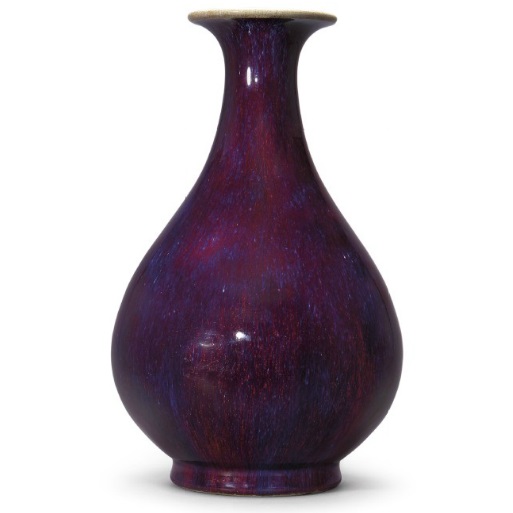
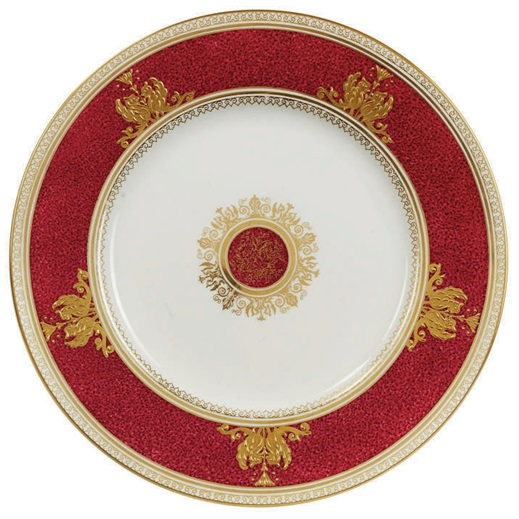
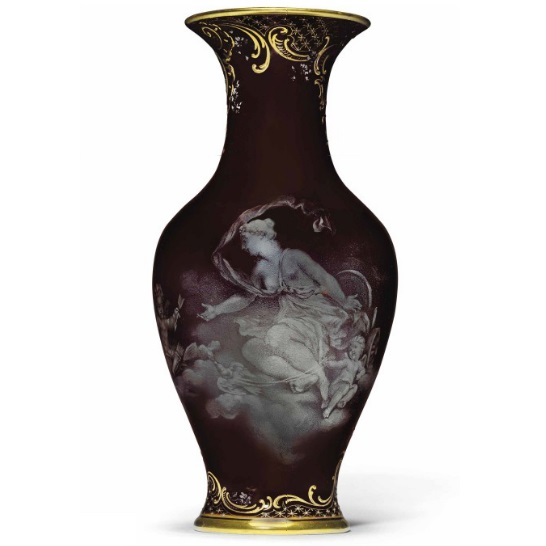
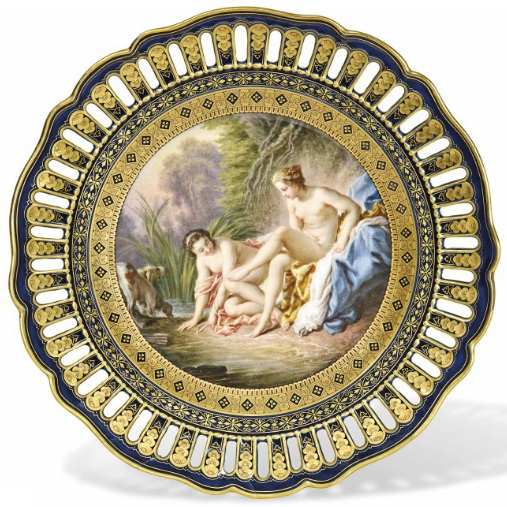
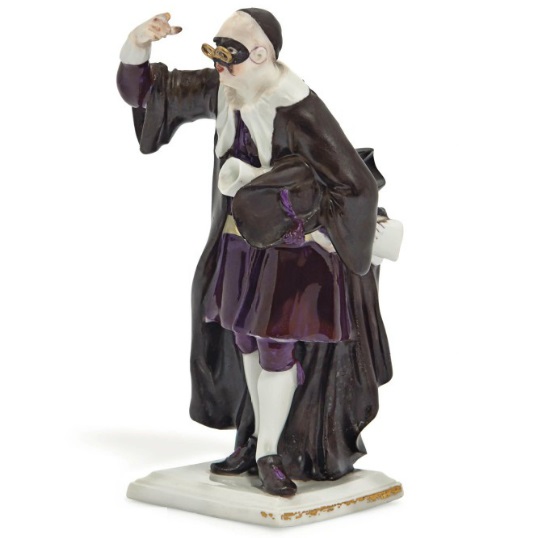
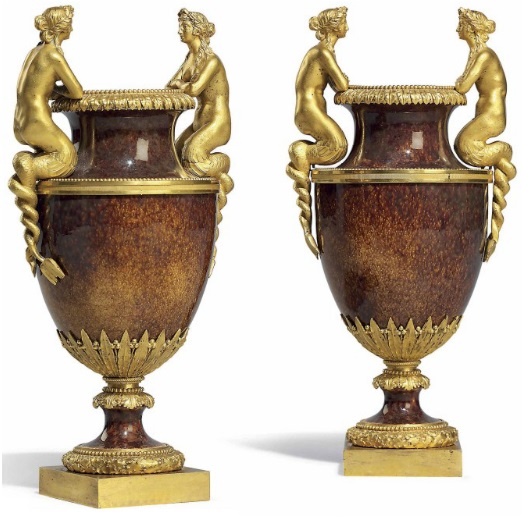
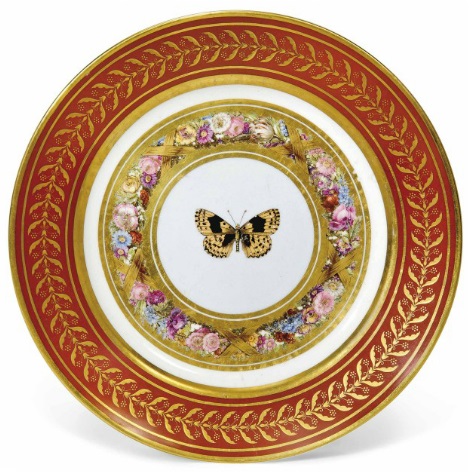
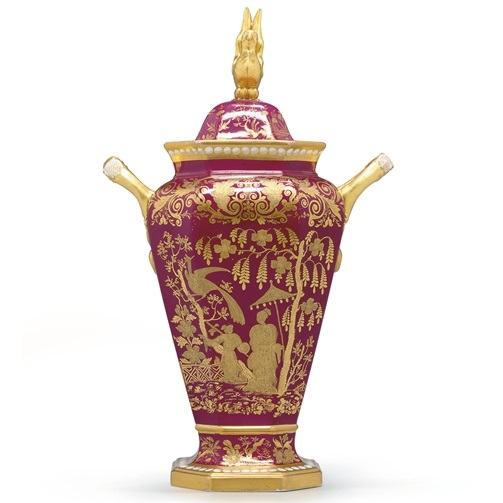
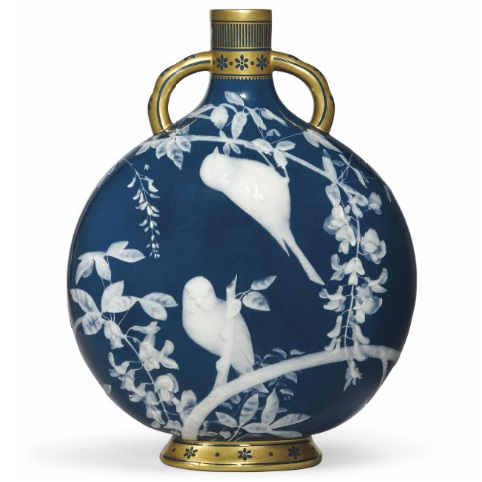
THE MOUNTS ATTRIBUTED TO JEAN-CLAUDE CHAMBELLAN DUPLESSIS, CIRCA 1755, THE PORCELAIN SECOND QUARTER 18TH CENTURY
20 ¼ in. (51.5 cm.) high; 11 7/8 in. (30 cm.) wide; 10 1/8 in. (25.5 cm.) deep.
Sold £722,500 Christie's auctions
BLACK PRINTED MARK FOR LIMOGES, 20TH CENTURY
6¾in. (7.2cm.) wide.
Sold $375 Christie's auctions
DATE CODE FOR 1903, BROWN PRINTED MARKS
9¼ in. (23.5 cm.) high.
Sold £1,000 Christie's auctions
QING DYNASTY, 18TH CENTURY
16 1/4 in. (41.4 cm.) high.
Sold $29,162 Christie's auctions
20TH CENTURY, PRINTED MARKS
11 in. (28 cm.) diameter (47).
Sold £3,250 Christie's auctions
LATE 19TH CENTURY, BLUE CROSSED SWORDS MARK, INCISED F159, IRON-RED X.624.
8 ¾ in. (22.2 cm.) high.
Sold $6,000 Christie's auctions
LATE 19TH CENTURY. BLUE CROSSED SWORDS MARK, PRESSNUMMERN 73, 9 AND 4
9 3/8 in. (23.8 cm.) wide.
Sold £1,250 Christie's auctions
CIRCA 1744-50, BLUE SHIELD MARK AND IMPRESSED RED ENAMEL O
5 11/16 in. (14.5 cm.) high.
Sold £4,000 Christie's auctions
THE MOUNTS ATTRIBUTED TO PIERRE-PHILIPPE THOMIRE, CIRCA 1785, ALMOST CERTAINLY COMMISSIONED BY DOMINIQUE DAGUERRE
10 ¾ in. (27 cm.) high.
Sold £98,500 Christie's auctions
CIRCA 1809, M.IMP.LE DE SEVRES 8 STENCILLED IN IRON-RED, GILDER'S MARK BO., INCISED 7 AND LD MARK, THREE DOTS IN UNDERGLAZE-BLUE TO FOOTRIM
9 1/8 in. (23.2 cm.) diam.
Sold £15,000 Christie's auctions
CIRCA 1810, IRON-RED SPODE MARK AND PATTERN NO. 4014
17½ in. (44.4 cm.) high (2).
Sold $3,750 Christie's auctions
CIRCA 1878, GILT MINTONS MARK BELOW PRINCE OF WALES FEATHERS AND 'PARIS EXHIBITION 1878', IMPRESSED FACTORY MARKS, SIGNED A.B
10 ¼ in. (26 cm.) high.
Sold £9,375 Christie's auctions













